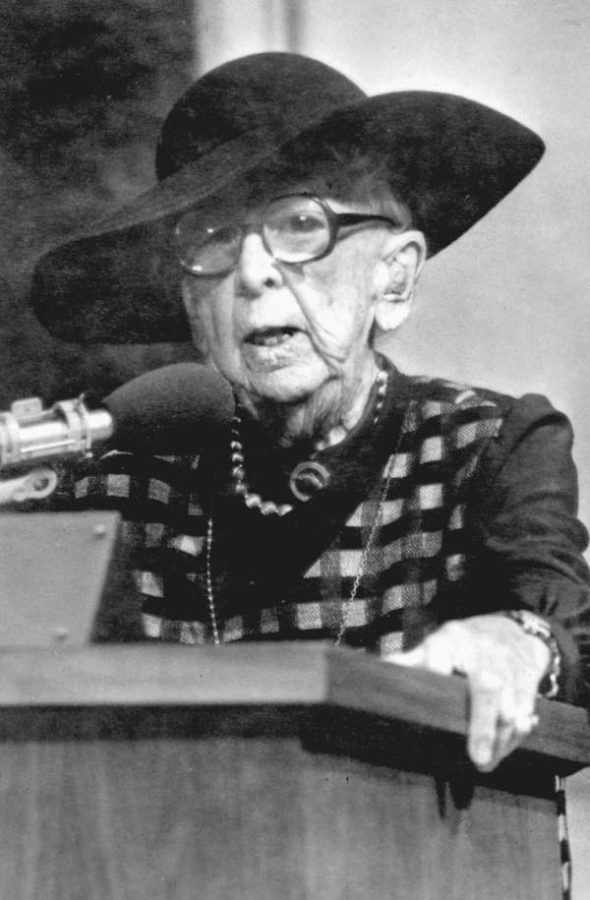Conservationist Marjory Stoneman Douglas serves as an inspiration for students inside and outside of the classroom. To honor her work as an environmentalist, a high school in Parkland was named after her. Photo courtesy of the State Archives of Florida, Florida Memory
Conservationist Marjory Stoneman Douglas leaves a legacy of environmentalism for future generations
Marjory Stoneman Douglas was a woman with a burning desire to make a difference in the world through environmentalism and advocating for the protection of natural ecosystems, most notably the Florida Everglades. Her devotion to conservationism across the United States upholds her legacy as a prominent figure not only in South Florida, but across the country.
Douglas was born in Minneapolis, Minnesota in 1890. She was regarded as an eloquent writer, even in her early years, and went on to study English at Wellesley College, further improving her writing ability. Douglas moved to New York City after graduating and pursued a journalism career.
After divorcing her husband in 1915, Douglas moved to Florida and began writing for the news publication Miami Herald. Douglas’ love for nature grew as she spent more time in the wetlands of South Florida, and was especially fond of the Florida Everglades’ unique ecosystem. Douglas became infuriated by residential developers draining swamps and destroying natural habitats. In an effort to draw attention to the significance of this natural wonder, Douglas began writing articles about protecting the Everglades, hoping to raise awareness in the public about the importance of the natural phenomenon.
In 1947, Douglas published a book entitled “The Everglades: River of Grass,” which became an instant bestseller. The novel explains the background of the Everglades, the people who contributed to its preservation and the importance of its protection. Her book raised awareness for the environment nationwide and is still considered by critics to be a classic piece of writing to this day.
After reading Douglas’ book, landscape architect Ernest F. Coe worked with Congress over a 10-year period to establish the Everglades as a National Park. After working closely with Douglas to make the aspiration a reality, Everglades National Park was established in 1947. In 1969, Douglas formed “Friends of the Everglades,” an organization dedicated to preserving and protecting the Everglades, and served as its president for many years until her death in 1998.
In addition to being an environmentalist, Douglas was also a well-known activist for the Women’s Suffrage and Civil Rights Movement. Her participation in protests and her writings paved the path for historical change in the U.S.
In 1993, Douglas was awarded a Presidential Medal of Freedom for her work by President Bill Clinton, the highest civilian honor and prestige one can earn. She donated her medal to Wellesley College, where she first found her love for writing.
Douglas had an everlasting influence on South Florida’s mission to be environmentally friendly, with Marjory Stoneman Douglas High School being named to honor her journey as a conservationist. Douglas passed away in 1998 at the age of 108.
While Douglas is a prominent figurehead in South Florida, her work in environmentalism is often overlooked by Americans today. Nevertheless, in the recent age of conservation awareness, Marjory Stoneman Douglas’ name comes up as an inspiration for change. Her continued determination to promote the protection of ecosystems around the country has inspired many others to begin their own journey in advocating for wildlife and nature.
